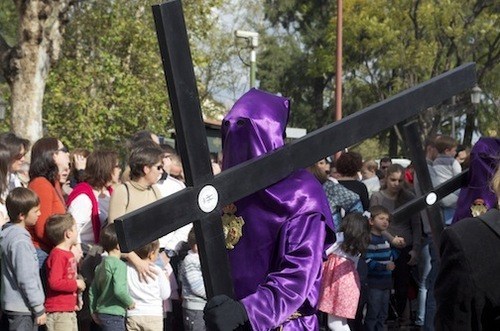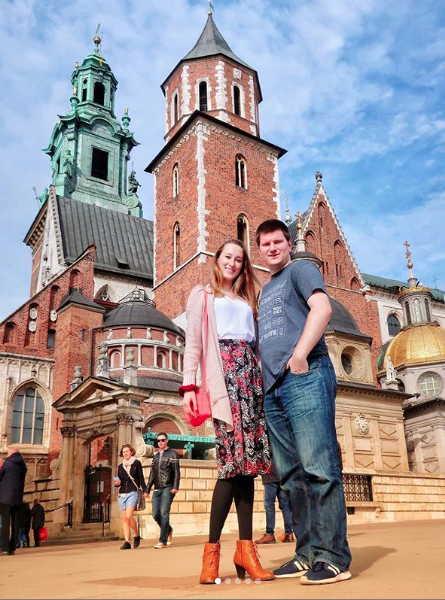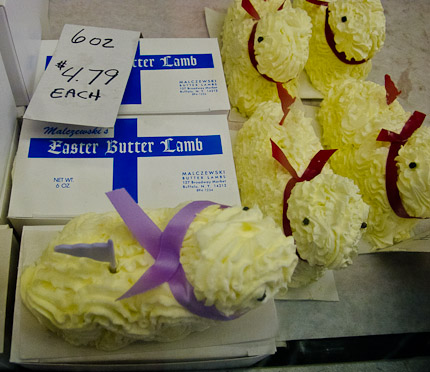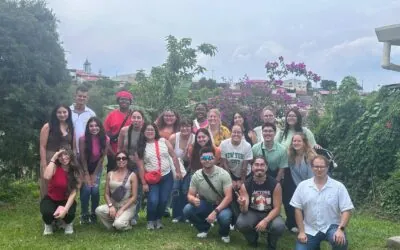For our Christian study abroad students, interns, volunteers, teachers, alumni and friends; we want to wish you a happy early Easter! Today we thought it’d be fun to look at how Holy Week is celebrated around the world. It’s a holiday you can witness for yourself next spring if you study abroad with API!

Spain – Semana Santa
Semana Santa is the busiest week of the year for Spaniards! If you live with a host family, you’ll likely hear the phrase “muy importante” many times as they try to describe the events leading up to Easter.

API alumni Christine O’Dea describes Semana Santa during her study abroad program in 2013: “The areas around the Catedral were lined with rows of seats, and in the windows hung beautiful red flags, many with NO8DO sewn into them. There were food stands selling candy, waffles, peanuts, and toys. A general aura of happiness and faith was present, even at 3 am when people were lining the streets to see processions.
During processions, it was loud and overflowing with families, tourists, and visitors from all over the world. Processions are similar to parades and organized by religious brotherhoods and churches. They are organized with similar orders, with up to 2,500 people marching (Nazarenos).

A large cross opens the ceremony, followed by a marching band. Then, in pairs, the Nazarenos walk side-by-side wearing uniform attire: white robes, a pointed hood with the colors differing amongst brotherhoods, and carrying a tall candle. Nazarenos range in age from young children with their parents walking alongside them, to older people who have participated in processions for decades.
On Holy Saturday, I attended mass at 11 pm until 1 am. Although it was in Spanish, it was beautiful to see so many people come together and take this holiday so seriously. All week, people were dressed in their best clothes—which might be hard to imagine since everyone already dresses so nicely on an average day. Women wore all black with La Mantilla—similar to a veil—while men wore suits and slicked their hair back neatly. Children were even cuter than usual, with their tights and dresses, and most siblings with matching red outfits—I would come to Sevilla for Semana Santa just to see the beautifully dressed children.”
In addition, Spanish cuisine is certainly a huge part of the festivities – so expect some tapas while you’re out and about!
Poland – Holy Week and music

The Beethoven Easter Festival in Warsaw is a must-see if you’re in Poland for the Easter holidays. The annual program provides classical music concerts throughout Holy Week.
The Monday after Easter is also considered a holiday across the country. Banks, government offices and other businesses close their doors so families can spend the day together.

One of Poland’s more unique traditions is Easter butter lambs! Yes, that’s butter carved into the shape of a lamb, so don’t be surprised if you see this while you study abroad in Krakow. The symbolic lamb is usually included in a basket that families take with them to church to be blessed. When families return home, the contents of the basket (usually eggs, sausage, ham and bread) are enjoyed with a side of the butter lamb.
Argentina – Easter egg hunts!

Christian students studying abroad in Buenos Aires will notice some similarities between how their families and Argentinian families celebrate Easter. Chocolate Easter eggs are usually attributed to North American traditions, but chocolate eggs and egg hunts are also very popular in Argentina. In addition, worshippers spend a lot of time with their families during the weekend especially.
Germany – Green eggs & ham?
You may be surprised if you spend Holy Week in Berlin and head out to get a bite to eat! A common tradition on Gründonnerstag (Maundy Thursday) is to eat green foods! Spinach is abundant and families in Frankfurt especially love to put a delicious green sauce over their lunch.




